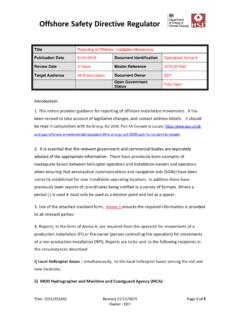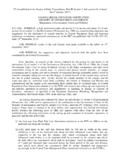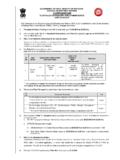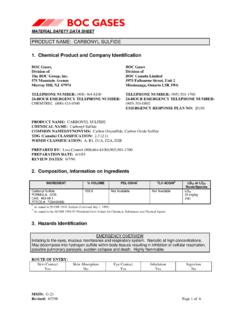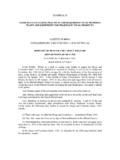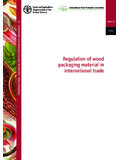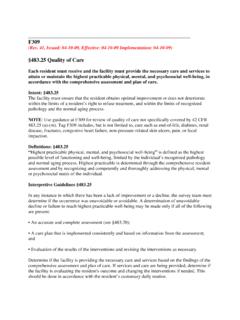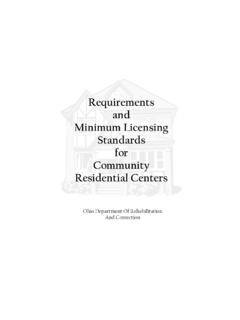Transcription of REVISED GUIDELINES ON EVACUATION ANALYSIS …
1 Documents/ (E).docx E 4 ALBERT EMBANKMENT LONDON SE1 7SR Telephone: +44 (0)20 7735 7611 Fax: +44 (0)20 7587 3210 6 June 2016 REVISED GUIDELINES ON EVACUATION ANALYSIS FOR NEW AND EXISTING PASSENGER SHIPS 1 The Maritime Safety Committee, at its seventy-first session (19 to 28 May 1999), having approved the Interim GUIDELINES for a simplified EVACUATION ANALYSIS of ro-ro passenger ships ( ) as a guide for the implementation of SOLAS regulation II-2 , requested the Sub-Committee on Fire Protection (FP) to also develop GUIDELINES on EVACUATION ANALYSIS for passenger ships in general and high-speed passenger craft. 2 The Committee, at its seventy-fourth session (30 May to 8 June 2001), following a recommendation of the forty-fifth session of the FP Sub-Committee (8 to 12 January 2001), approved the Interim GUIDELINES for a simplified EVACUATION ANALYSIS of high-speed passenger craft ( ).
2 The Committee, at its eightieth session (11 to 20 May 2005), after having considered a proposal by the forty-ninth session of the FP Sub-Committee (24 to 28 January 2005) in light of the experience gained in the application of the aforementioned interim GUIDELINES , approved the GUIDELINES for a simplified EVACUATION ANALYSIS of high-speed passenger craft ( ), which superseded , together with the worked example appended thereto. 3 The Committee, at its seventy-fifth session (15 to 24 May 2002), further approved the Interim GUIDELINES on EVACUATION analyses for new and existing passenger ships ( ) and invited Member States to collect and submit to the FP Sub-Committee for further consideration, any information and data resulting from research and development activities, full-scale tests and findings on human behaviour which may be relevant for the necessary future upgrading of the interim GUIDELINES .
3 4 The Committee, at its eighty-third session (3 to 12 October 2007), approved the GUIDELINES on EVACUATION analyses for new and existing passenger ships ( ), including ro-ro passenger ships. 5 The Committee, at its ninety-sixth session (11 to 20 May 2016), approved the REVISED GUIDELINES on EVACUATION analyses for new and existing passenger ships, as set out in the annexes, as a guide for the implementation of amendments to SOLAS regulation II-2 , making EVACUATION ANALYSIS mandatory not only for ro-ro passenger ships but also for other passenger ships constructed on or after 1 January 2020. 1 The amendments to SOLAS regulation II-2 were adopted by the Committee, at its ninety-sixth session (11 to 20 May 2016) and are expected to enter into force on 1 January 2020.
4 Page 2 Documents/ (E).docx 6 The annexed REVISED GUIDELINES offer the possibility of using two distinct methods: .1 a simplified EVACUATION ANALYSIS (annex 2); and/or .2 an advanced EVACUATION ANALYSIS (annex 3). 7 The assumptions inherent within the simplified method are by their nature limiting. As the complexity of the ships increases (through the mix of passenger types, accommodation types, number of decks and number of stairways), these assumptions become less representative of reality. In such cases, the use of the advanced method would be preferred. However, in early design iterations of the ship, the simplified method has merit due to its relative ease of use and its ability to provide an approximation to expected EVACUATION performance.
5 8 It is also to be noted that the acceptable EVACUATION durations in these GUIDELINES are based on an ANALYSIS of fire risk. 9 Member States are invited to bring the annexed GUIDELINES (annexes 1 to 3) to the attention of all those concerned and, in particular, to: .1 recommend them to use these GUIDELINES when conducting EVACUATION analyses, early in the design process, on new ro-ro passenger ships in compliance with SOLAS regulation II-2 (which entered into force on 1 July 2002) and SOLAS regulation II-2 (which is expected to enter into force on 1 January 2020); .2 recommend them to use these GUIDELINES when conducting EVACUATION analyses, early in the design process, on new passenger ships other than ro-ro passenger ships constructed on or after 1 January 2020 carrying more than 36 passengers in compliance with SOLAS regulation II-2 (which is expected to enter into force on 1 January 2020); and.
6 3 encourage them to conduct EVACUATION analyses on existing passenger ships using these GUIDELINES . 10 Member States are also encouraged to: .1 collect and submit to the Sub-Committee on Ship Systems and Equipment for further consideration, any information and data resulting from research and development activities, full-scale tests and findings on human behaviour, which may be relevant for the necessary future upgrading of the present GUIDELINES ; .2 submit to the Sub-Committee on Ship Systems and Equipment information on experience gained in the implementation of the GUIDELINES ; and .3 use the Guidance on validation/verification of EVACUATION simulation tools provided in annex 3 to the present circular when assessing the ability of EVACUATION simulation tools to perform an advanced EVACUATION ANALYSIS .
7 11 This circular supersedes ** Annex 1, page 1 Documents/ (E).docx ANNEX 1 REVISED GUIDELINES ON EVACUATION ANALYSIS FOR NEW AND EXISTING PASSENGER SHIPS Preamble 1 The following information is provided for consideration by, and guidance to, the users of these GUIDELINES : .1 To ensure uniformity of application, typical benchmark scenarios and relevant data are specified in the GUIDELINES . Therefore, the aim of the ANALYSIS is to assess the performance of the ship with regard to the benchmark scenarios rather than simulating an actual emergency..2 Although the approach is, from a theoretical and mathematical point of view, sufficiently developed to deal with realistic simulations of EVACUATION on board ships, there is still a shortfall in the amount of verification data and practical experience on its application.
8 When suitable information is provided by Member Governments, the Organization should reappraise the figures, parameters, benchmark scenarios and performance standards defined in the interim GUIDELINES ..3 Almost all the data and parameters given in the GUIDELINES are based on well-documented data coming from civil building experience. The data and results from ongoing research and development show the importance of such data for improving the interim GUIDELINES . Nevertheless, the simulation of these benchmark scenarios are expected to improve ship design by identifying inadequate escape arrangements, congestion points and optimizing EVACUATION arrangements, thereby significantly enhancing safety.
9 2 For the above considerations, it is recommended that: .1 the EVACUATION ANALYSIS be carried out as indicated in the GUIDELINES , in particular using the scenarios and parameters provided; .2 the objective should be to assess the EVACUATION process through benchmark cases rather than trying to model the EVACUATION in real emergency conditions; .3 application of the GUIDELINES to analyse actual events to the greatest extent possible, where passengers were called to assembly stations during a drill or where a passenger ship was actually evacuated under emergency conditions, would be beneficial in validating the GUIDELINES ; .4 the aim of the EVACUATION ANALYSIS for existing passenger ships should be to identify congestion points and/or critical areas and to provide recommendations as to where these points and critical areas are located on board; and.
10 5 keeping in mind that it is the company's responsibility to ensure passenger and crew safety by means of operational measures, if the result of an ANALYSIS , conducted on an existing passenger ship shows that the maximum allowable EVACUATION duration has been exceeded, then the company should ensure that suitable operational measures ( updates of the onboard emergency procedures, improved signage, emergency preparedness of the crew, etc.) are implemented. Annex 1, page 2 Documents/ (E).docx 1 General The purpose of this part of the GUIDELINES is to present the methodology for conducting an EVACUATION ANALYSIS and, in particular, to.
